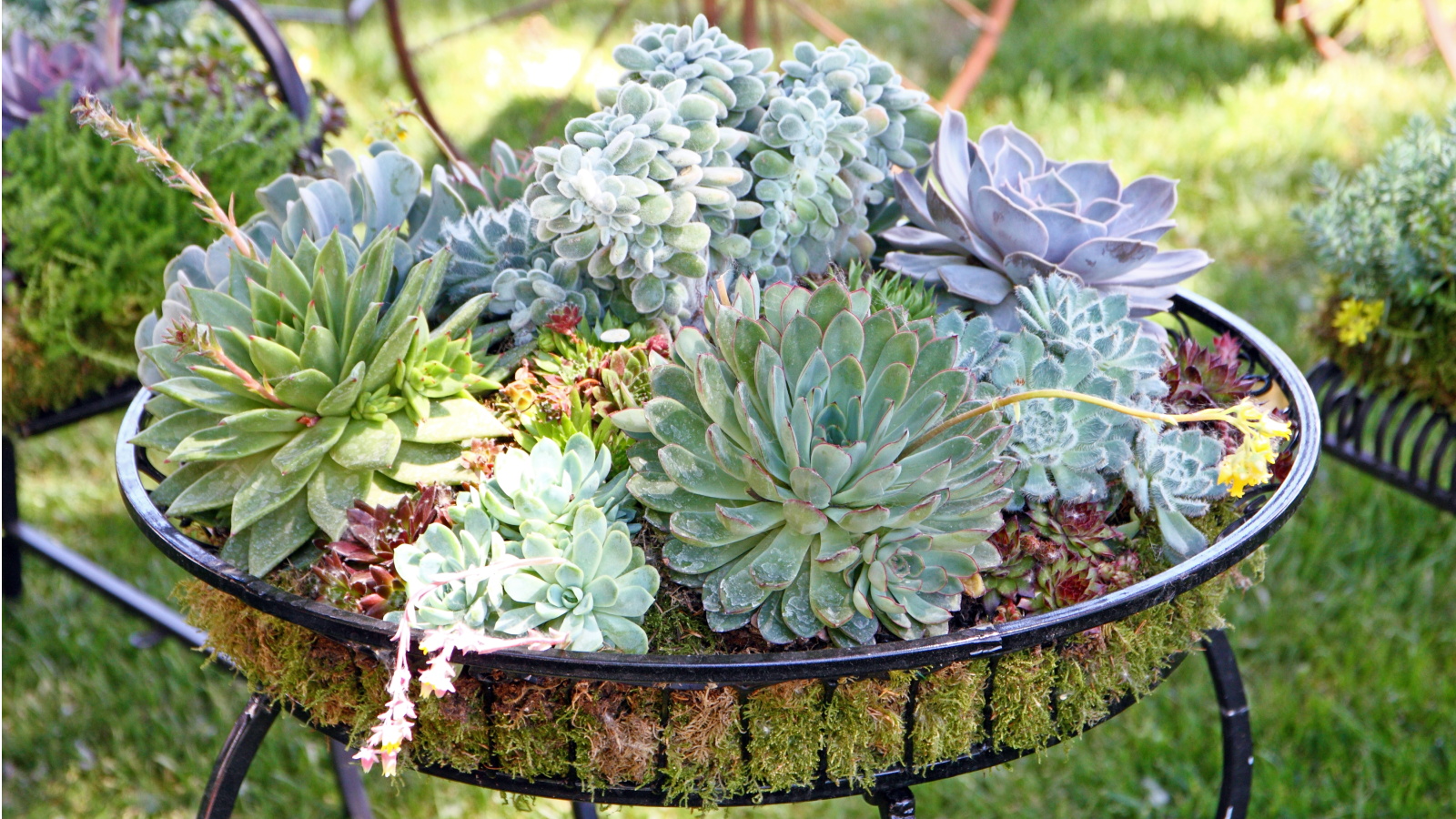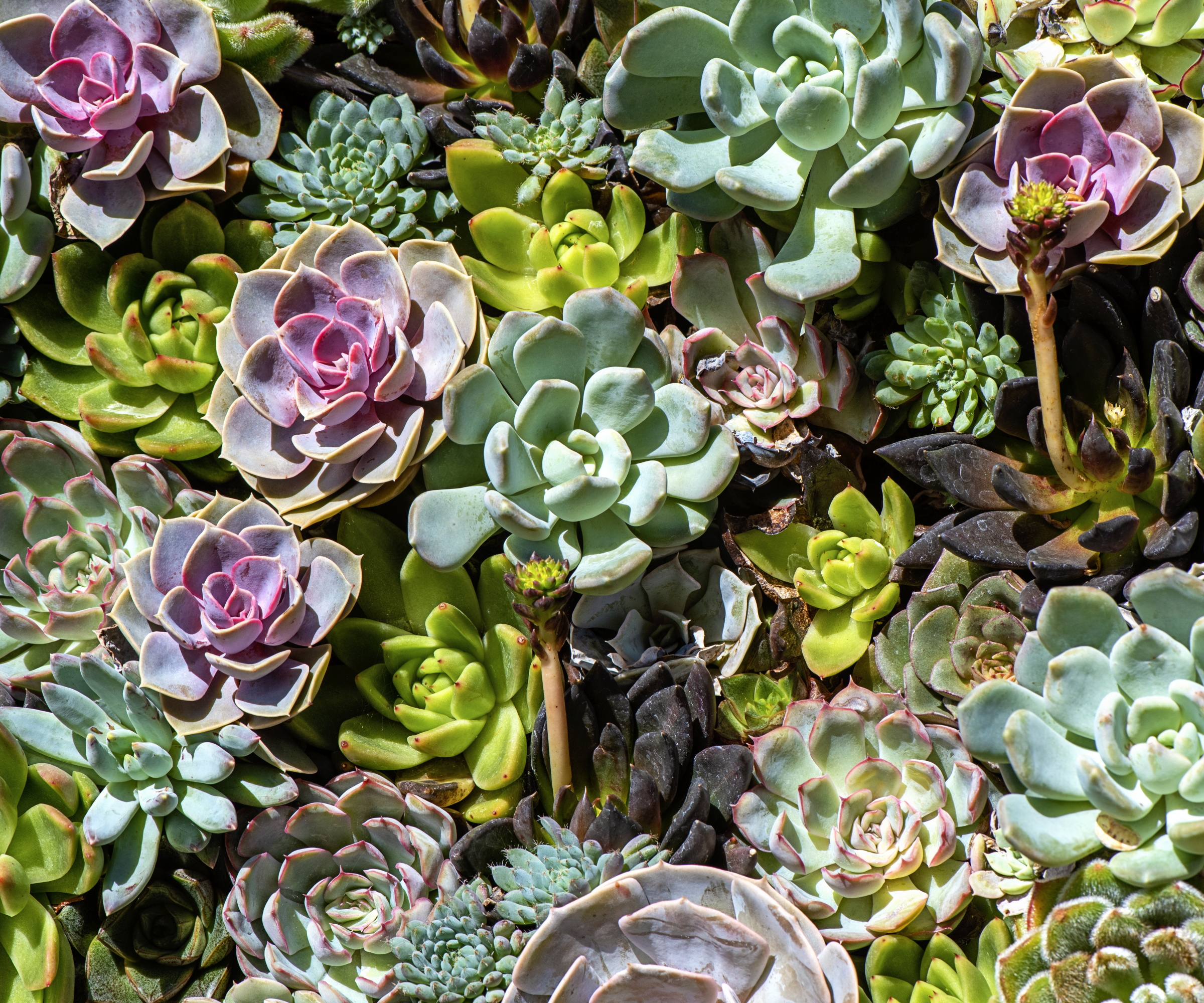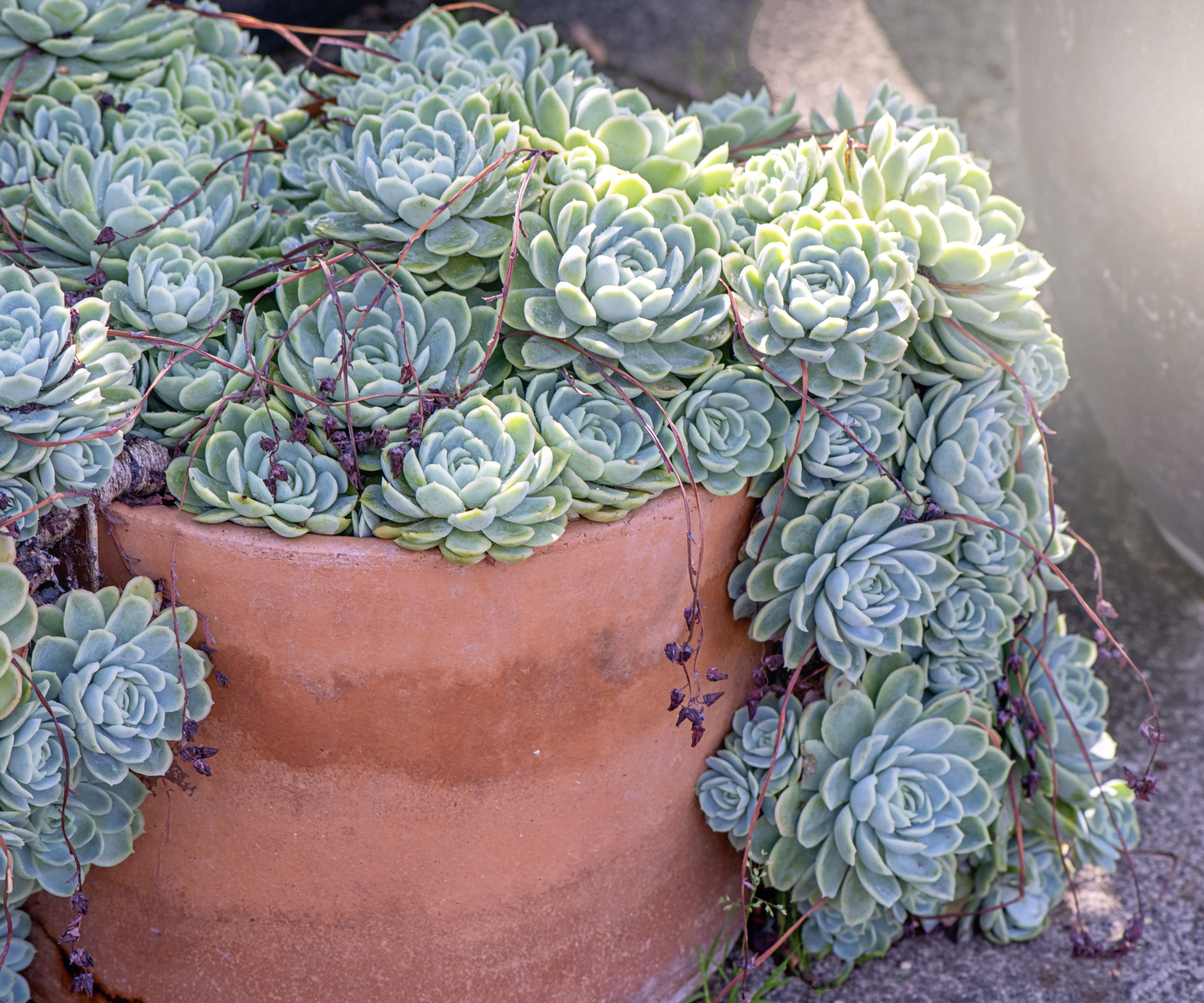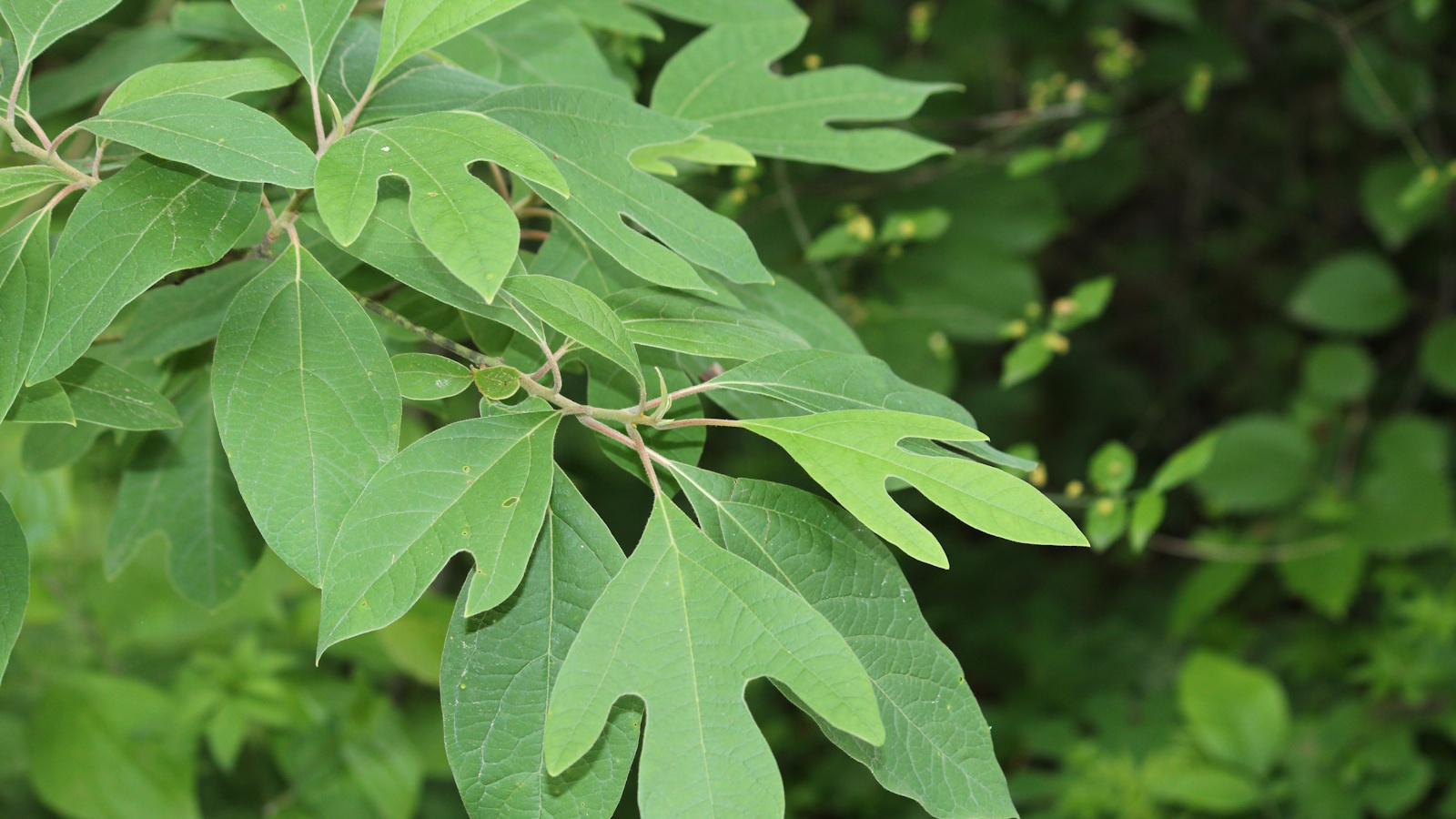Can you grow succulents outdoors? Experts reveal how to add these desert beauties to your backyard landscape
Some succulent varieties are a lot hardier than you might expect


Succulents are some of the most popular houseplants because they come in all shapes, sizes, textures, and colors. Their versatile nature means you can also use them in a number of ways, from terrariums to living wall art. But, have you ever wondered if you can grow succulents outdoors to enjoy them in your yard, too?
The good news is, it is possible to grow succulents outdoors in certain conditions. It does require slightly different succulent care than indoor plants, but for the most part it's easy to incorporate them in your yard. Of course, there are certain regions these plants won't take to well, considering they're native to warmer, drier environments. However, it is also an option to grow them outdoors for the warmer months only before brining them back indoors for winter.
So, if you're keen to landscape with succulents and cacti, keep reading to hear what experts say about growing succulents outdoors. Here, we take a look at which types of succulent do best in outside conditions and how to go about growing them in your yard successfully.
Which types of succulents can you grow outdoors?

Before jumping in with trying to grow succulents outdoors, it's important to understand which types of indoor succulents can work in an outdoor growing environment.
'Succulents are low-maintenance plants, which makes them an ideal choice for outdoor gardens,' says Julia Omelchenko, botany expert for the Plantum app. 'However, not all varieties can handle growing outside year-round, particularly in areas with extreme temperatures,' she adds.
For this reason, it's wise to choose cold-hardy varieties when planning to grow succulents outdoors.
'Sedum and sempervivum are both a cold-hardy genus, capable of surviving frost and snow, while echeveria and aloe are more tender types, requiring a warmer climate,' Julia says.
If you're considering a succulent that falls out of these categories, it's best to first research their cold-tolerance before planting them in your yard.

Julia Omelchenko is a professional botany expert for the Plantum app that helps users identify plant species, diagnose their conditions, and get specific care advice. She has 4 years of experience consulting on botany-related topics for Plantum (formerly NatureID). Her areas of specialization include phytopathology, plant physiology, and plant biochemistry.
How to grow succulents outdoors
The US hardiness zone in which you can grow succulents outdoors will depend on the type of succulents you're growing. On average, though, hardy succulents can grow down to US hardiness zone 5. 'Tender species, as well as many cacti species, rather grow best in warmer conditions (US hardiness zone 9 to zone 11), where temperatures rarely drop below freezing,' says Julia.
'For gardeners in colder regions, it’s necessary to either bring tender succulents indoors for the winter or protect these plants from frost,' she advises.
With that in mind, here's how you can grow succulents outdoors:
How to grow succulents outdoors

- Position: The best position for these sun-loving plants is 'a spot that receives at least six hours of sunlight per day,' says horticulturalist Gail Pabst of the National Garden Bureau. A south-facing garden is ideal for growing succulents for this reason. Without sufficient levels of sunlight, you're likely to spot your succulent turning yellow. 'With sufficient lighting, they won’t stretch out and will maintain their bright colors and compact rosette shape,' Julia explains. When choosing the best position for your outdoor succulents, you also need to take into account what soil to use for succulents. 'These plants are sensitive to excess moisture, so they need a well-draining substrate to prevent root rot,' Julia explains. For this reason, it's beneficial to grow succulents in a container garden outdoors, where you can use succulent potting mix (from Amazon). Alternatively, make your own succulent potting mix.
- Temperature: As mentioned above, succulents can only grow well outdoors in milder growing zones. This is because succulents typically prefer temperatures between 55°F and 75°F. Of course, this does differ between varieties. For the most part, this means even the most cold-hardy succulents cannot survive frost. Proper succulent winter care requires you to put precautions in place to protect them from becoming damaged as temperatures drop. 'You should bring them inside or cover them with some frost cloth (from Amazon) to prevent cold damage,' Julia advises. 'In some cases, using well-ventilated cold frames can help keep them warm while ensuring proper air circulation,' she suggests.
- Watering: Not knowing when to water succulents indoors is often what leads houseplant owners to make common succulent mistakes. The important thing to keep in mind is these plants are native to dry environments and tolerate drought. Outdoors is no different, other than you need to take into account the rain will also provide water to your succulents, reducing your need to water them. 'Their leaves, stems and roots are able to store water, allowing them to withstand dry conditions or accidental neglect,' Gail explains. 'Water deeply, but infrequently for best results. Succulents are prone to root rot if overwatered,' she adds. Use this soil moisture meter from Amazon to check your succulents soil each time before watering.

Gail is a passionate horticulturist with over 25 years' experience in the industry. She is an avid home gardener too and loves to try out the newest varieties and techniques. Gail's work with the National Garden Bureau and the All-America Selection has helped her to continue their mission of inspiring and teaching gardening with others.
FAQs
Do my outdoor succulents need fertilizing?
Succulents are on the list of houseplants you don't need to fertilize often, and they can grow well without the help of plant food. However, both indoor and outdoor succulents can still benefit from occasional feeding during spring and summer when they're actively growing.
'Use liquid fertilizers formulated for cacti and succulents (from Amazon). It’s a good idea to dilute the product with more water to prevent chemical burn,' advises Julia Omelchenko, botany expert for the Plantum app. 'Don’t use fertilizers high in nitrogen, as this can cause your plants to stretch out and lose their compact shape,' she warns.
If you're keen to get your outdoor succulent landscape going, try using some of the best fast-growing succulents that will quickly fill out the space. Of course, remember to first check if these succulents can grow well in your local climate and research the conditions they require to thrive before planting them in your yard.
Sign up to the Homes & Gardens newsletter
Design expertise in your inbox – from inspiring decorating ideas and beautiful celebrity homes to practical gardening advice and shopping round-ups.

Tenielle is a Gardens News Writer at Homes & Gardens. She holds a qualification in MA Magazine Journalism and has over six years of journalistic experience. Before coming to Homes & Gardens, Tenielle was in the editorial department at the Royal Horticultural Society and worked on The Garden magazine. As our in-house houseplant expert, Tenielle writes on a range of solutions to houseplant problems, as well as other 'how to' guides, inspiring garden projects, and the latest gardening news. When she isn't writing, Tenielle can be found propagating her ever-growing collection of indoor plants, helping others overcome common houseplant pests and diseases, volunteering at a local gardening club, and attending gardening workshops, like a composting masterclass.
You must confirm your public display name before commenting
Please logout and then login again, you will then be prompted to enter your display name.
-
 Are you making the most out of the estate sales in your area? These are the 5 most valuable items you should be shopping for
Are you making the most out of the estate sales in your area? These are the 5 most valuable items you should be shopping forVintage lovers and antique experts share the objects you should always look out for when you're exploring an estate sale
By Eleanor Richardson
-
 How to grow sassafras – for a low-maintenance native tree that can even be planted in shady yards
How to grow sassafras – for a low-maintenance native tree that can even be planted in shady yardsFor an easy-to-grow North American tree, you will not find much better than sassafras
By Thomas Rutter